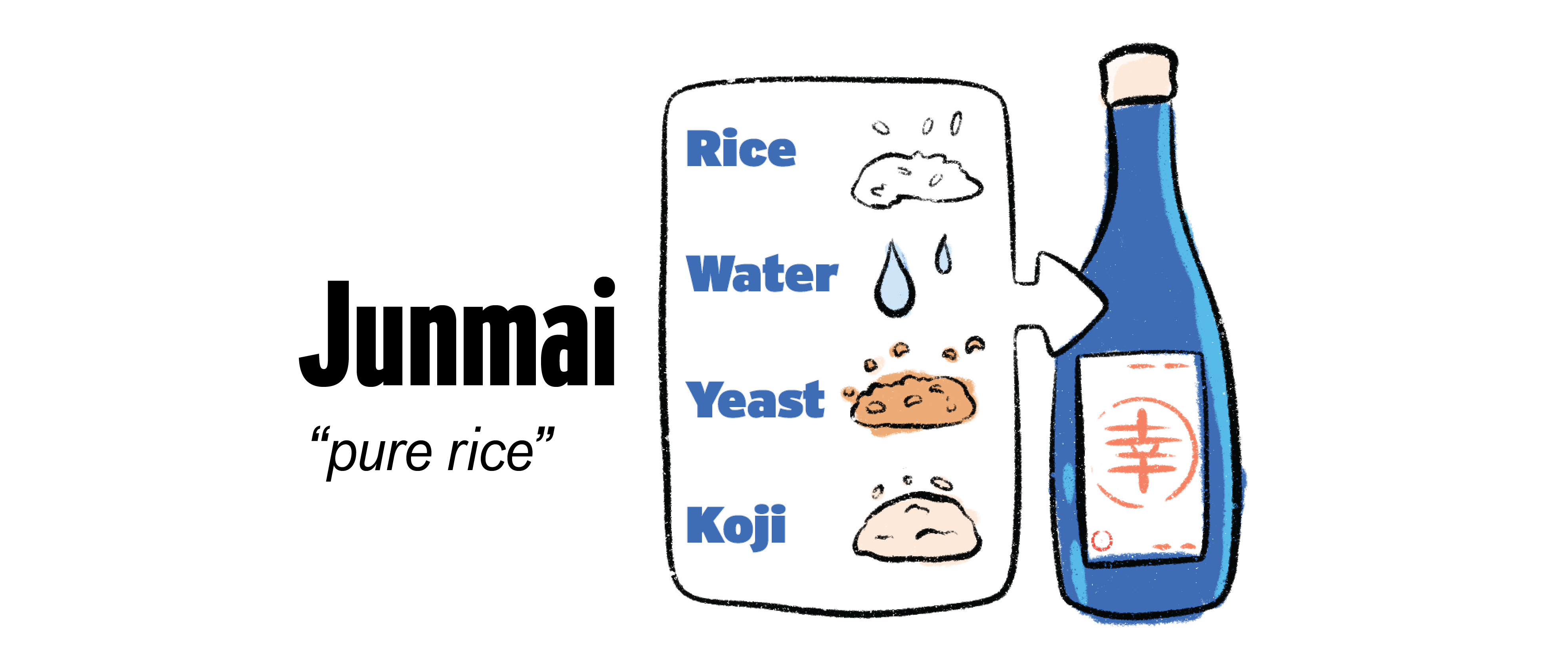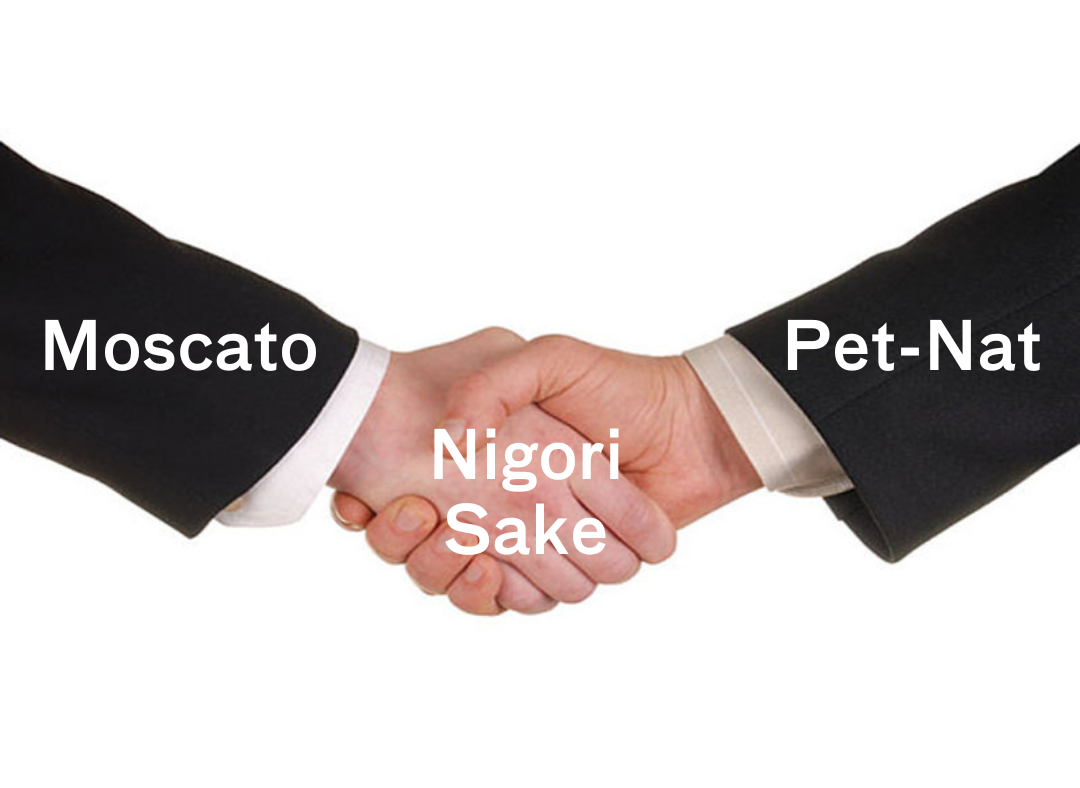

Get to know your Junmai's from your Gingo's!
TL;DR--racy
The polishing grade of sake rice refers to the amount of the outer layers of the grain that has been milled away. It is also referred to as seimai-buai or milling rate. The degree of polishing affects the flavour, aroma, and overall character of the sake.

How does the Polishing Rate affect the Sake Style?--strawberry
In general, sake made from rice that has been more highly polished will have a lighter, more refined flavour, while sake made from rice that has been less polished will have a fuller, more robust and rustic flavour.

How is the polishing rate calculated?--earth
The polishing grade is typically expressed as a percentage, with a lower percentage indicating a higher degree of polishing. For example, a polishing grade of 60% means that 40% of the rice grain has been milled away, while a polishing grade of 80% means that only 20% of the rice grain has been milled away.
The sake’s polishing grade is usually indicated on the label so you can easily determine the degree of milling for a particular sake. The polishing rate categories are Honjozo, Gingo, and Daigingo. Below is an easy explanation of each.
What are the different sake polishing rates?--cellar

Daiginjo
Daiginjo sake has been very highly polished, typically to a degree of 50% or less. This sake is like a luxury car, it has all the high-end technology and amenities. Daiginjo sake is known for its delicate, refined flavours and aromas. Its high polishing rate means its commonly considered to be the pinnacle of sake brewing.
Ginjo
Ginjo sake is made with rice that has been polished to a degree of 60% or less. This sake is like a premium car, it has a smoother ride and more complex and refined flavours. Ginjo sake is known for its fresh, aromatic flavours and it is generally considered to be a premium grade of sake.
Honjozo
Honjo sake is made with rice that has been polished to a degree of 70% or less. This sake is like a classic car with a slight touch of modernisation, it may have a touch of some extra power but still maintains the traditional taste and feel. Honjozo sake is best known for its smooth, easy-drinking character.
Futsuhu
Futsushu, on the other hand, is a type of sake that is often referred to as an everyday, budget option. It has no regulated minimum polishing rate and often has a higher alcohol content than premium sakes. This doesn't mean futsushu is always "bottom shelf" - no way! Depending on the brewer, some are crafted with the same care and attention as premium sakes, making it a great option for those who want to enjoy sake without breaking the bank.
Other Important Sake Classifications--plum
Though not directly related to the polishing rate, these classifications are extra helpful when reading a sake wine label.
Junmai
In sake, Junmai is a term that means "pure rice" and indicates that the sake that is made only from rice, water, and koji. No alcohol or other ingredients are added during the brewing process. As a result, Junmai can be used as a prefix for any Ginjo and Daiginjo sake that was made without any added alcohol (eg. Junami Ginjo, Junmai Daiginjo).

If you just see only Junmai on the label, you can assume a polishing degree of 70% or less. And stylistically, Junmai sake like a reliable entry-level car; it may not have all the latest technology and amenities, but it still drives like a charm. Junmai has a good reputation, with a fuller body and robust flavours.
Junmai Ginjo and Junmai Daiginjo styles are usually the most expensive and are considered to be top-tier expressions of the Ginjo and Daiginjo categories. This is because no brewers’ alcohol was added. But, don’t be fooled. The addition of alcohol doesn't inherently affect the sake's quality so it is a bit of an outdated perspective.
Originally, brewers’ alcohol was added to compensate for rice shortages after World War II, but now it's more of a stylistic choice. The addition of it can add to the sake's texture and character, often resulting in a more mineral-driven, smooth and cleaner-feeling beverage. Style is style, one’s not necessarily better than the other. But perhaps one style is more ideal depending on the food you pair with it!
Nigori
Not nigiri, nor negroni, this is Nigori!
Nigori is unfiltered sake that has a cloudy appearance due to the presence of rice particles and sediment suspended in the liquid. It is known for its rich, creamy texture and often sweeter flavour than clear sake. Unlike traditional sake which goes through a filtration process to make it clear, Nigori sake is purposely left unfiltered to give it a unique texture and mouthfeel. It can also sometimes have some effervescence and is less dry than filtered sake. Perhaps Nigori is sake’s slightly sweet answer to Pet-Nat wines?

Of course, these are just general guidelines to what you can stylistically expect from each sake classification. There are variations within each category and many other factors can influence the taste, aroma, and quality of the sake, like the type of rice, water, yeast, koji, brewing method and how freshly bottled it was — The younger and fresher the sake, the better its expression!
Remember, the main thing is to find the sake that you enjoy drinking, and pair it with foods you love!
About the Author
Meet Alex Tanner – a sommelier with a passion for both wine and the great outdoors. Whether it's après-ski on a mountaintop or camping deep in ancient woodlands, foraging along the way, Alex believes nature’s treasures are best enjoyed with the perfect glass of wine (or two).
Do you know your wine personality? If your answer is no, take our quiz to find out which wines to pick up next and build your box!
Build my box





